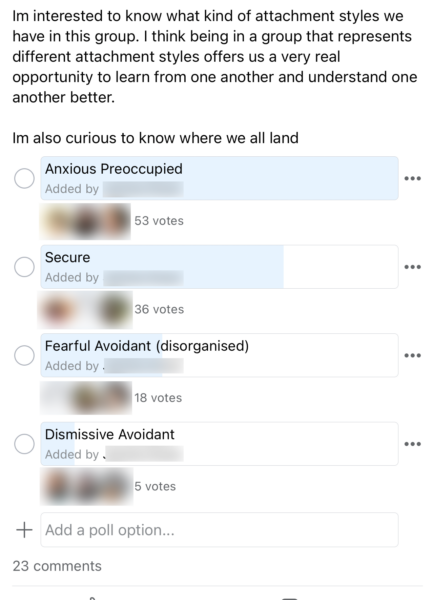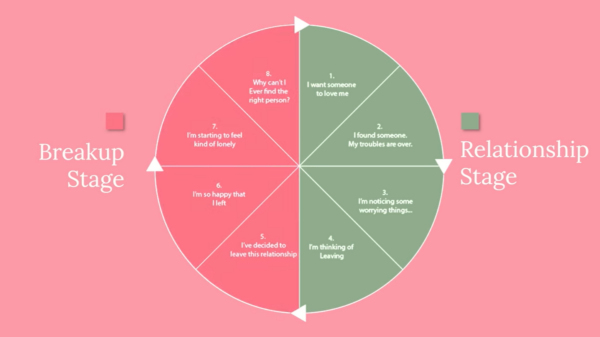Female Behavior After A Breakup
Description
This is a complete list of the top female behaviors after a breakup.
And no, the items on this list weren’t randomly chosen just because we felt like it. Each and every one of them was either experienced firsthand by me or one of our coaches, or I actually found research to back it up.
Here are the common behaviors females are likely to exhibit after a breakup,
- More susceptible to anxious behaviors
- Are better at emotional expression
- End up recovering more fully after a breakup
- Won’t go on the rebound as often as men
- The glow down phase
- The glow up phase
- Getting stuck in the relapse stage
Let’s dive right in
Behavior #1: More Susceptible To Anxious Behaviors
So, the first thing I’ve noticed is that women tend to exhibit more anxious behaviors or engage in certain actions.
While researching for this article, I realized that I hadn’t answered a fundamental question about attachment styles. It has always been apparent that most of our clients have anxious attachment styles, while their exes tend to have avoidant attachment styles.
Anxious client,

Avoidant ex,

However, I wanted to explore the breakdown of these attachment styles based on gender roles.
Do women tend to have more anxious attachment styles compared to men? I delved into research and discovered that it argues,
Women indeed tend to have more anxious attachment styles than men.
This finding sheds light on the next aspect we’re going to discuss, which further supports this notion.
Women, especially after a breakup, tend to display more anxious behaviors.
If you aren’t familiar with what that looks like then allow me to give you a quick crash course,
- They’ll seek constant re-assurance
- Become overly clingy or dependent
- Constantly fear you’ll abandon them
- Get jealous
- Become possessive
- Overanalyze
- Be quick to emotional fluctuations
But by far the biggest thing I’ve witnessed women do after a breakup is exhibit what I refer to as “Gnatting” behaviors, which is an acronym I came up with for G.N.A.T. (Going Nuts at Texting).
G- Going
N- Nuts
A- At
T- Texting
But this leads me to my next question: Why? Why are women more susceptible to anxious behaviors?
Behavior #2: Women Are Better At Emotional Expression
Is it the concept of the core wound?
Well, ya that’s part of it. But I also believe another factor is the second significant behavior we’ve noticed women experience after a breakup. It’s the fact that they are generally better at emotional expression.
Women tend to openly express their feelings more compared to men. Consequently, after a breakup, they often discuss it with their friends or family members, which can aid in processing their emotions and facilitating a quicker healing process. On the other hand, men have been socially conditioned to suppress their emotions, which can prolong the healing journey.
Interestingly, a study conducted by Binghamton University in New York sheds light on this phenomenon.
The study revealed that women experience more pain during a breakup but eventually achieve more complete recovery. This finding, to me, highlights another significant behavior exhibited by women.
They may initially feel greater distress, but ultimately, they recover more fully.
Behavior #3: Women Recover More Fully After A Breakup
What’s fascinating about these first three behaviors in women is the synergy that exists among them.
Think of causality.
The cause and effect of the situation.
Females tend to be better at emotional expression. (which leads them to) Exhibit more anxious attachment behaviors (but because of that outward expression) They tend to get over breakup more fully.
Have you ever come across that meme depicting how men and women handle breakups?

It portrays men being initially ecstatic and women in tears, but then it reverses as time passes.
Surprisingly, there is often some truth to these memes.
The Binghamton study suggests that because men internalize their emotions and lack open communication and support systems, as dictated by societal norms, their healing process is prolonged.
In contrast, women feel the full spectrum of emotions, possess better emotional expression, and have support systems in place, leading to a more thorough recovery from breakups.
So, while they may feel worse initially, the positive aspect is that they tend to overcome it more completely.
Behavior #4: They Tend NOT To Go On The Rebound (Men Do)
The next significant behavior I’ve noticed among women after a breakup relates to their tendency not to engage in rebound relationships, whereas men often do.
I came across an intriguing divorce statistic that argued,
Men are more likely to seek rebound relationships following a divorce, while women generally do not.
This observation has been consistent in our coaching practice as well.
Although we don’t encounter many women or men attempting to recover relationships after marriage, it has occurred. However, when it comes to breakups, we have frequently seen female clients implementing the “being there” method.
The “being there” method is a strategy we developed for situations where one’s ex has moved on to someone else.
Interestingly, we have noticed a higher number of women utilizing the “being there” method compared to men.
I believe this relates back to the fact that women tend to refrain from entering rebound relationships as frequently as men. It’s not to say that women never engage in rebounds, but men appear to do so more often.
I attribute this pattern to the avoidant cycle, which I often discuss using my “avoidant death wheel” model consisting of eight stages.

As individuals progress through these stages, the avoidant (who we often find to be the exes of our clients) reaches a point where they start missing their former partner, and the grief from the breakup begins to surface.
At this juncture, they have a choice: either confront and process their emotions, something women tend to excel at, or distract themselves.
Rebounding is often a way of seeking distraction. We have observed that fearful avoidants are more susceptible to rebounding, although avoidants in general may also engage in this behavior.
Interestingly, according to the research, rebound relationships tend not to last very long.
They have a relatively low success rate, with only 19% of rebound relationships lasting beyond two years.
So, in the long run, a rebound relationship is unlikely to endure for an extended period. Nevertheless, men are more inclined to pursue rebounds as a means of temporarily forgetting or processing their grief.
Behavior #5: The “Glow Down” Phase
Now, the next two breakup behaviors exhibited by women are closely interconnected.
- The glow down phase
- The glow up phase
They care considered separate, but they can almost be combined into one simple behavior if that makes any sense.
To truly understand this, we need to explore a crossroads that individuals face during a breakup. At this crossroads, one can either experience a “glow down” or a “glow up.”
Let’s first discuss the





